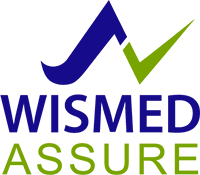By Rufus Sweeney
Amassing a considerable amount of debt during medical school is “situation normal” for practically every medical student. Even though debt is rarely seen as a good thing, you need to know the difference between good debt, bad debt, and debt to be avoided at all cost.
Choosing wisely now makes paying off your debt much easier.
In the category of “Just-Don’t-Do-It”, all sorts of credit cards are available and in many cases, actively promoted to medical students with special offers that include an interest free period, cash back on purchases, and all too easy sign up terms. But once that interest free introductory offer ends, you’re on the hook for anywhere from 12 to 25 percent interest on any balance you carry from month to month.
When you use a credit card to finance your lifestyle choices or, worse case, pay for essentials without a plan for paying off your balance each month, you’re playing with financial fire.
The “bad” in comparison to credit card debt, doesn’t look all that bad, but still with interest rates ranging from six to 10%, unsubsidized student loans are an expensive choice.
The “good” are those loans with the lowest possible interest. For example, interest rates for institutional loans from medical schools range from four to five percent. If low interest was the only criteria for determining “good” debt, then a mortgage at three to five percent and car loans at four to five percent would also fall into this category. That said, check out my previous blogs and podcasts on the pros and cons of buying a home and the reasons why it is a good idea to live like a resident, even after you become an attending physician.
Paying the piper
No conversation about interest rates is complete without a word or two about repaying debt.
Generally speaking, there are two popular methods: the snowball method and the avalanche method.
Popular financial expert Dave Ramsey recommends the snowball method because he says, “… personal finance is 20% head knowledge and 80% behavior. You need some quick wins in order to stay pumped enough to get out of debt completely.”
Here’s how it works:
Step 1: List your debts from smallest to largest regardless of interest rate
Step 2: Make minimum payments on all your debts except the smallest
Step 3: Pay as much as possible on your smallest debt
Step 4: Repeat until each debt is paid in full
Here’s an example using four different debts:
- $500 medical bill—$50 payment
- $2,500 credit card debt—$63 payment
- $7,000 car loan—$135 payment
- $10,000 student loan—$96 payment
Using the snowball method, you would make minimum payments on everything except the medical bill. You would pay as much as possible each month on the medical bill until it is paid off. You would then take the money you used for the minimum payment on the medical bill, plus as much extra as you can afford and use it to pay off your credit card debt. As soon as that debt is paid, you take all the money you previously used to pay the medical bill and credit card debt off and apply it to your car loan.
By the time you are ready to pay off your student loan, you’ve got a pretty big debt repayment snowball working for you.
The avalanche method takes a more practical approach… at least mathematically speaking. You make minimum payments on all debt and use any remaining money to pay off the debt with the highest interest rate. Like I said, this method is a more practical approach because it allows you to save hundreds of dollars in interest payments and reduce the time it takes to pay off all your debt.
When it comes to choosing which method to use, remember what Dave Ramsey says… “personal finance is 20% head knowledge and 80% behavior”.
In my next blog, we will explore the different ways in which interest rates are calculated.
If you need help managing your debt, one of your best resources is your financial aid officer. And, I highly recommend visiting the White Coat Investor website. It’s a great source for guidance on how to acquire and manage the “good” forms of debt.
